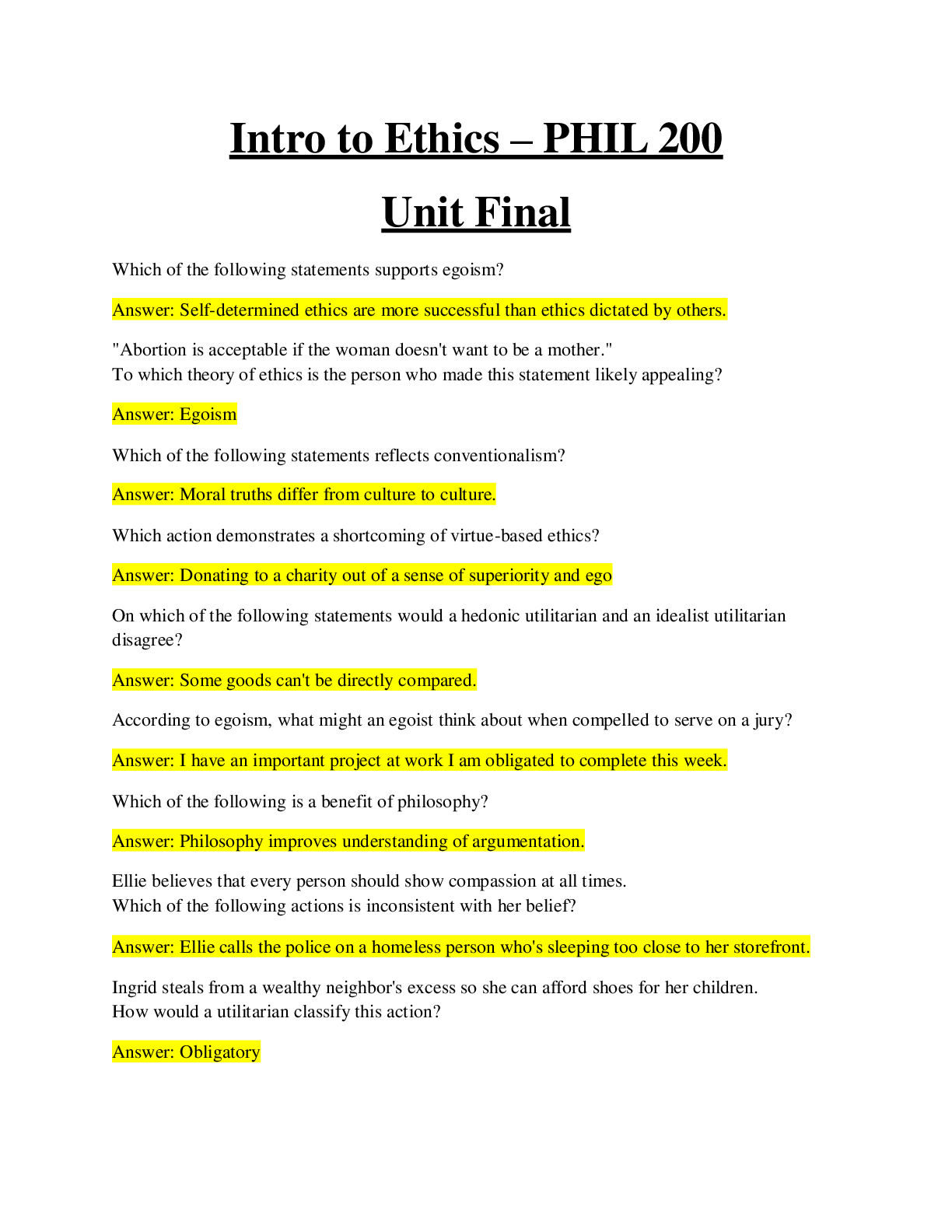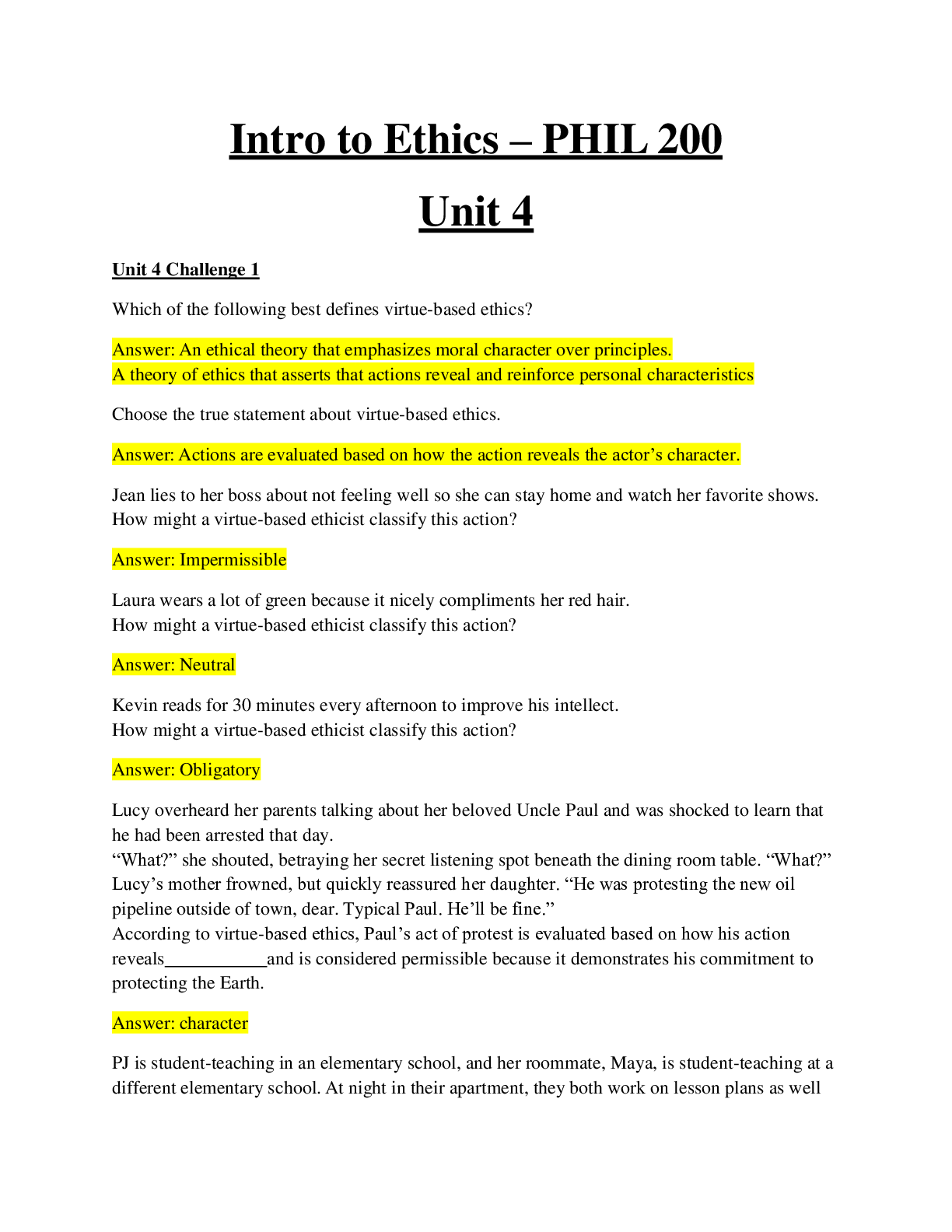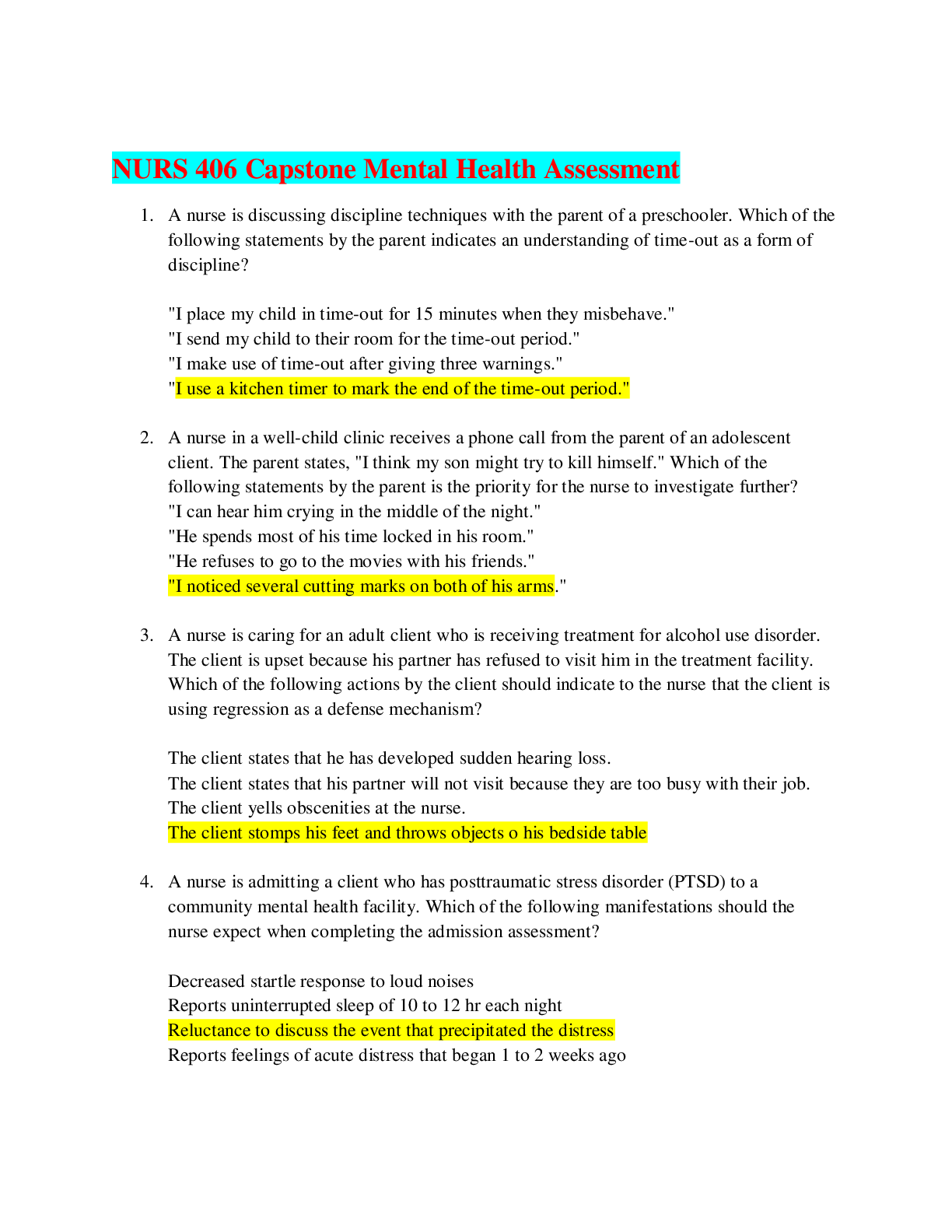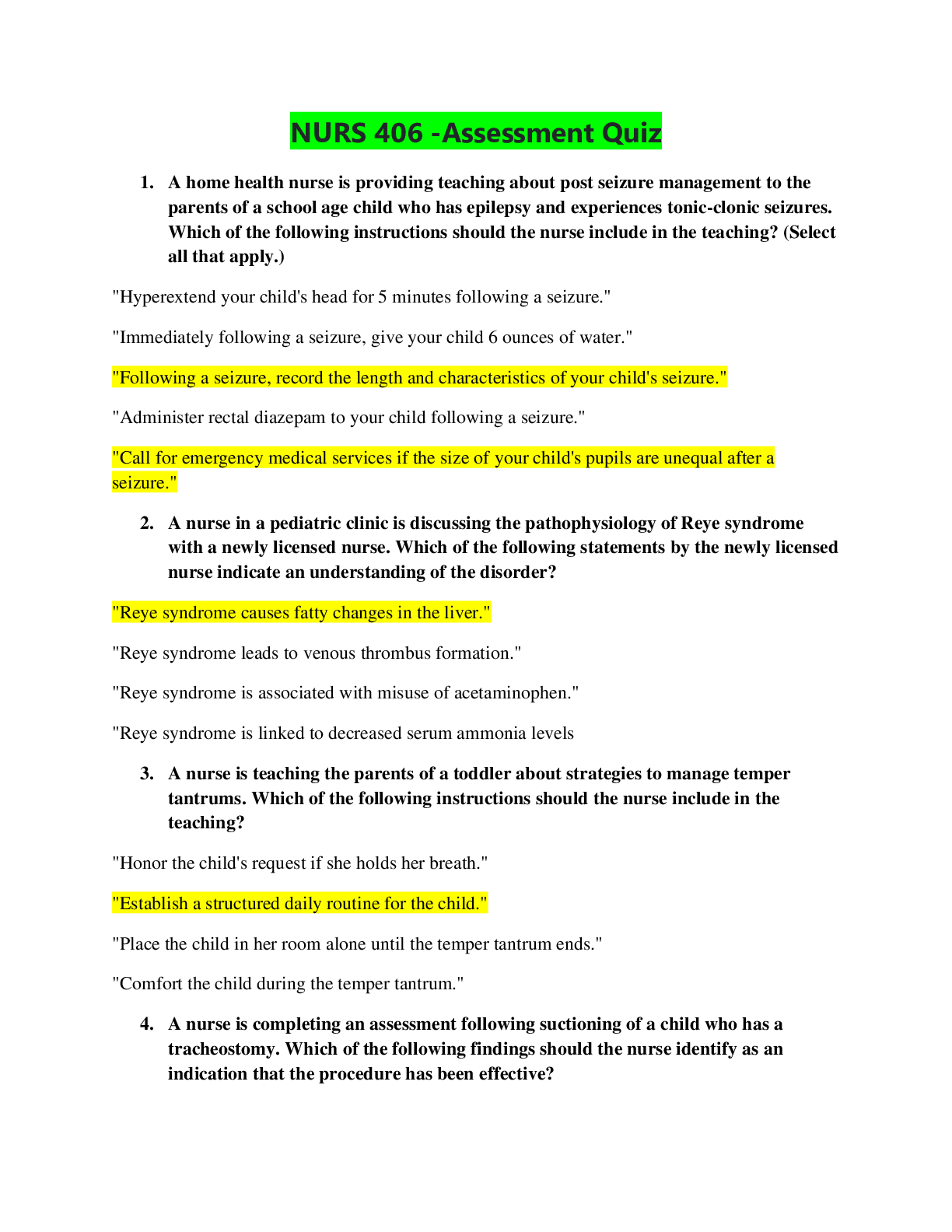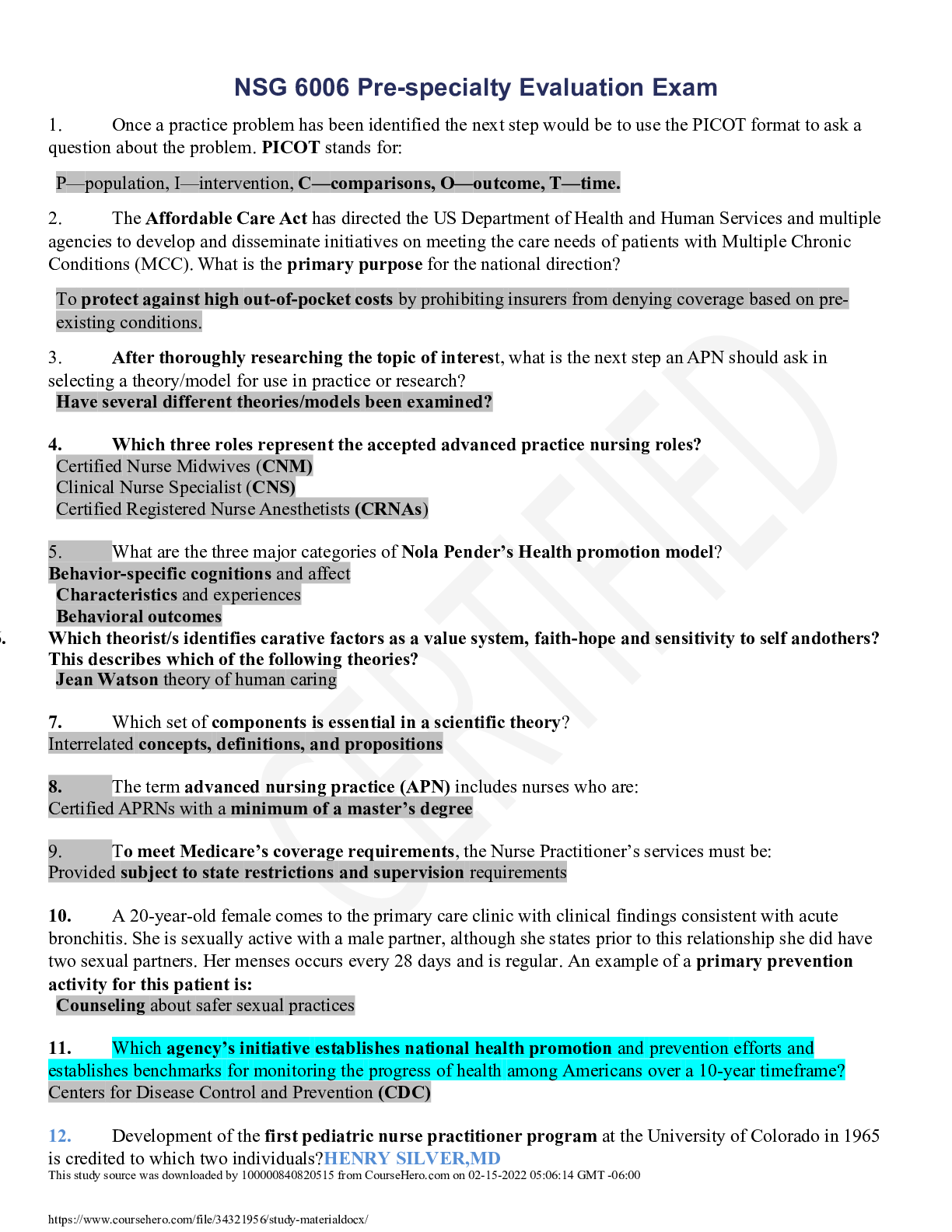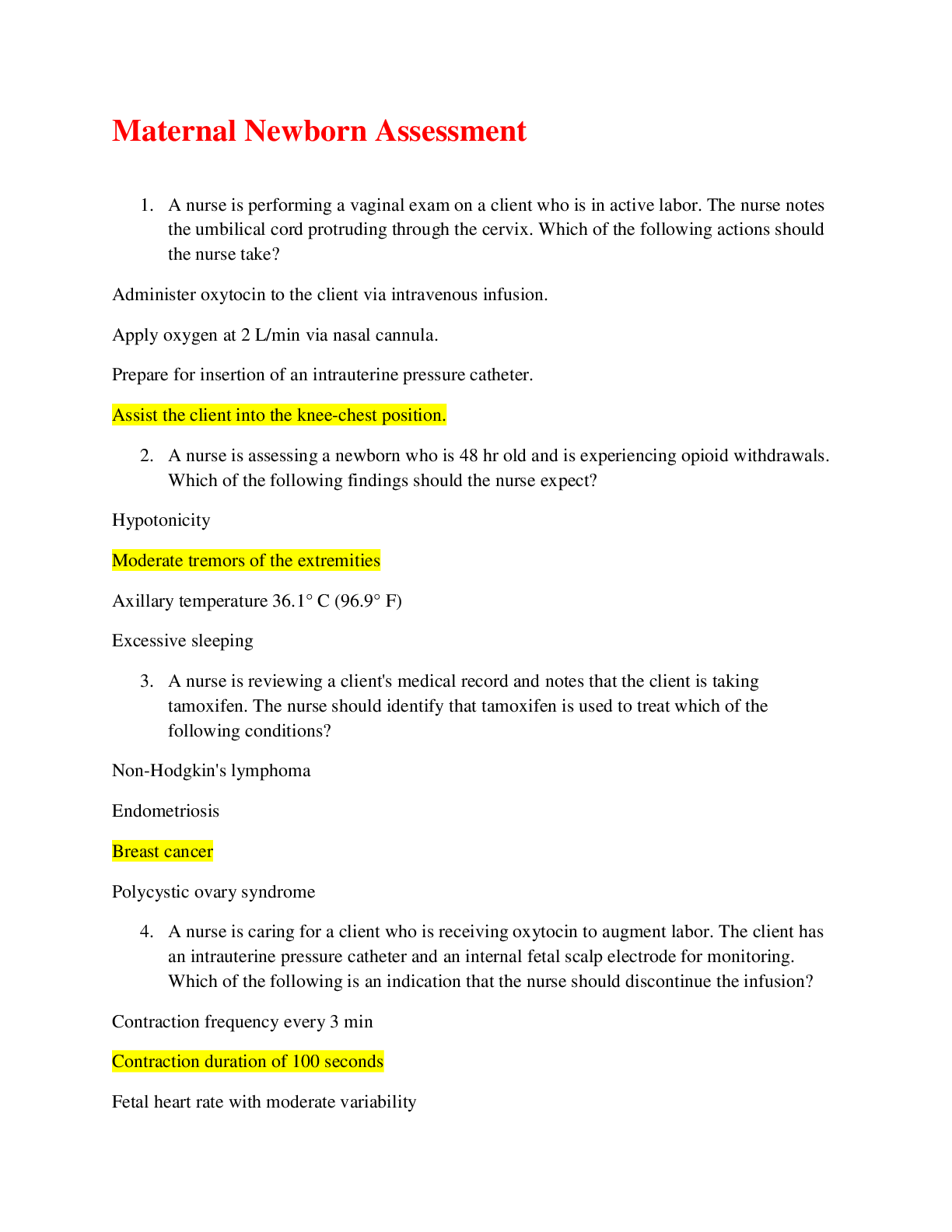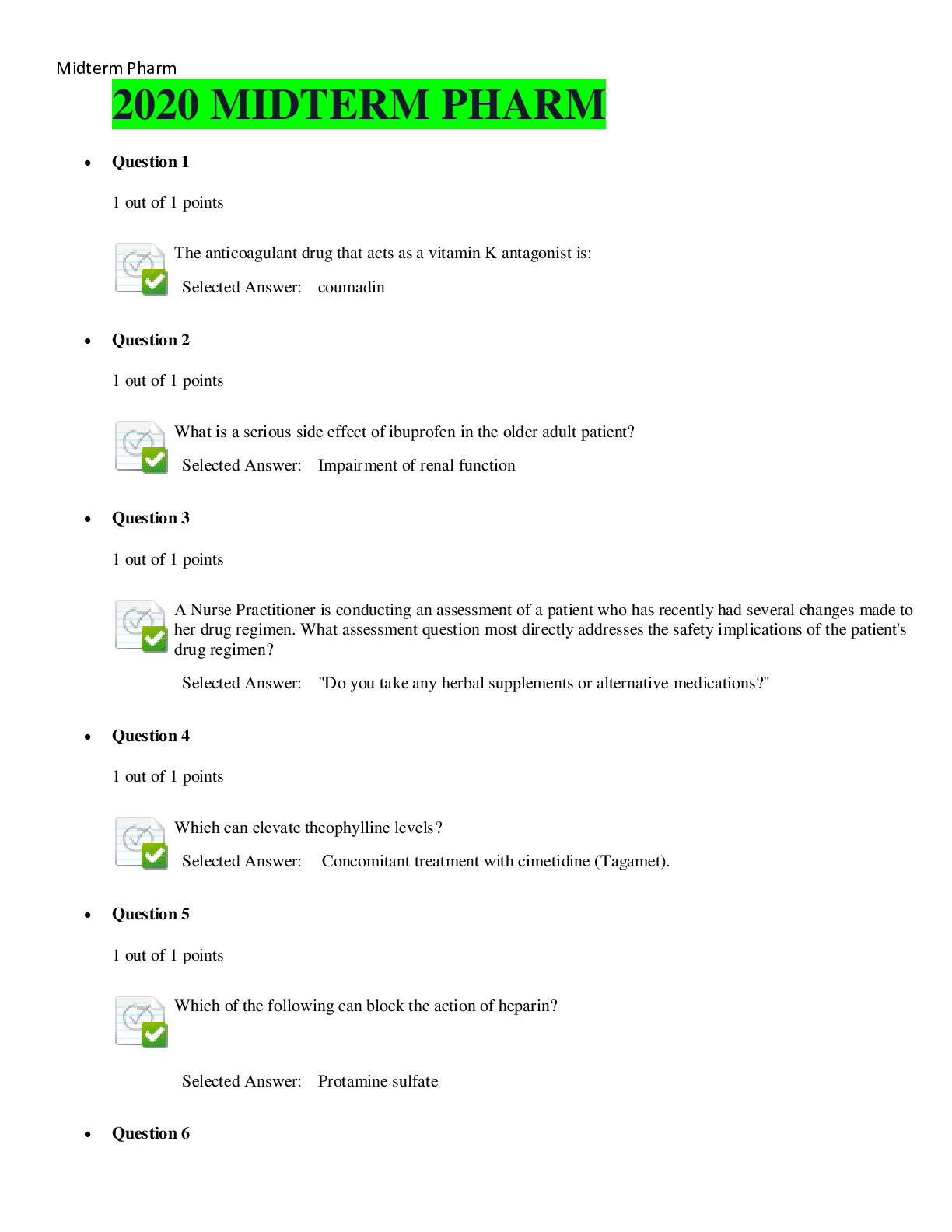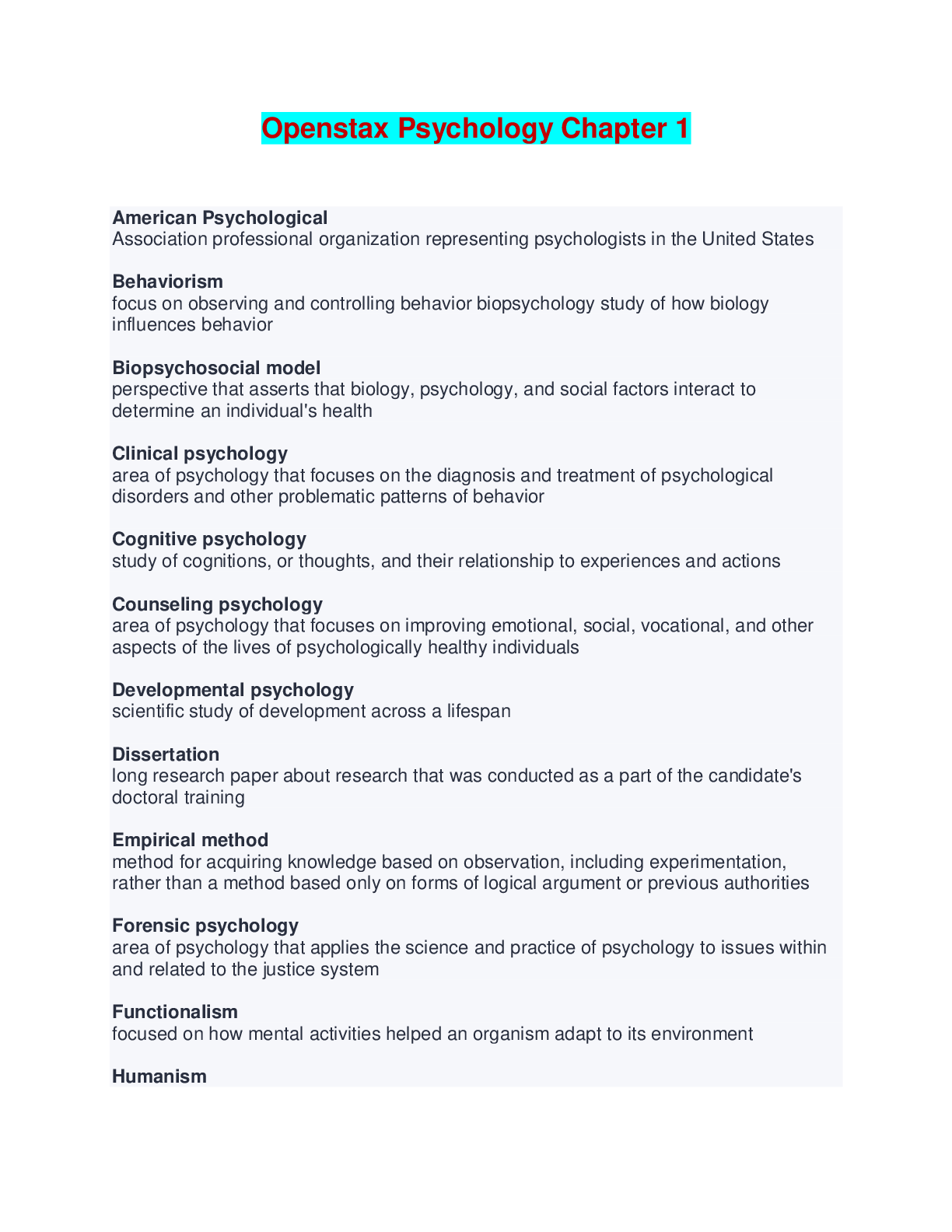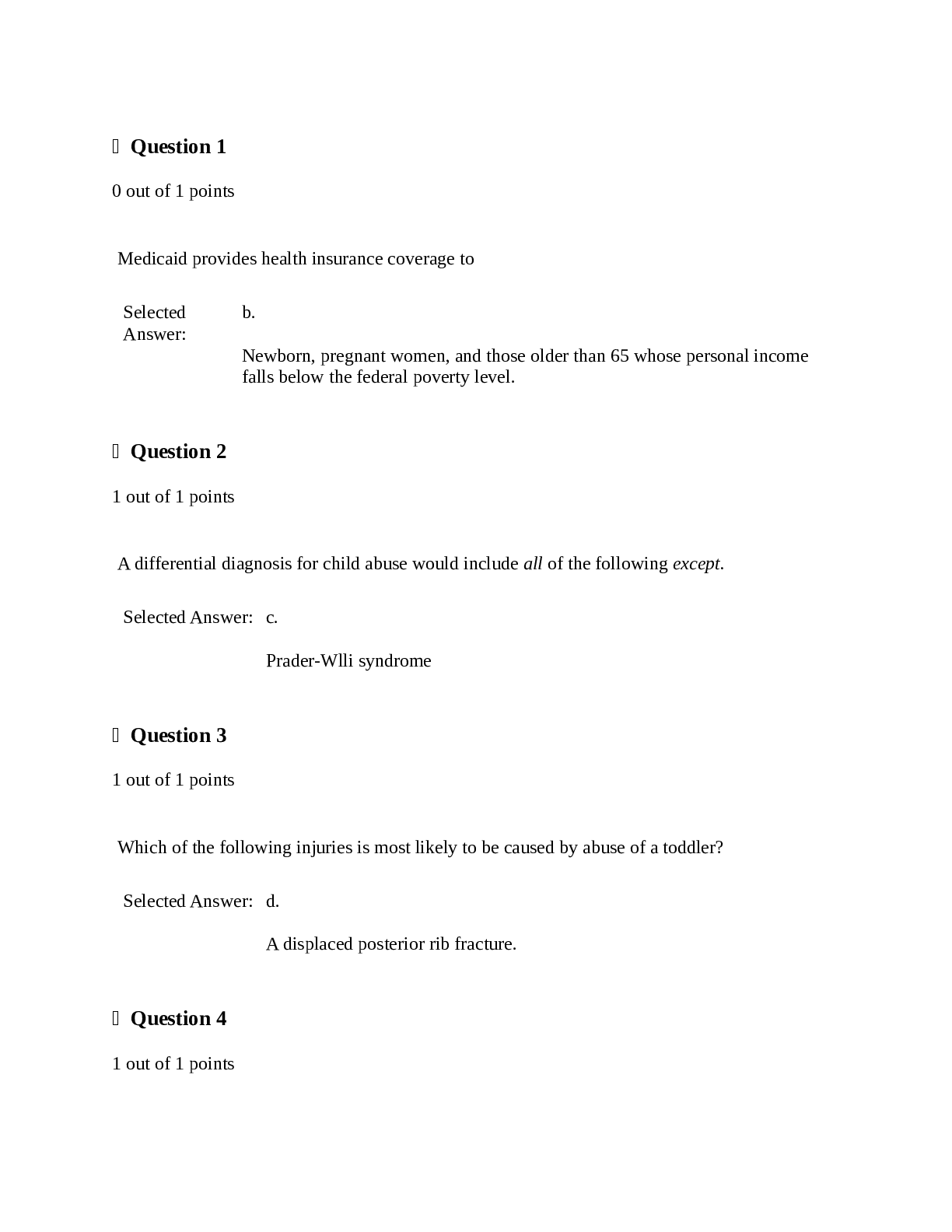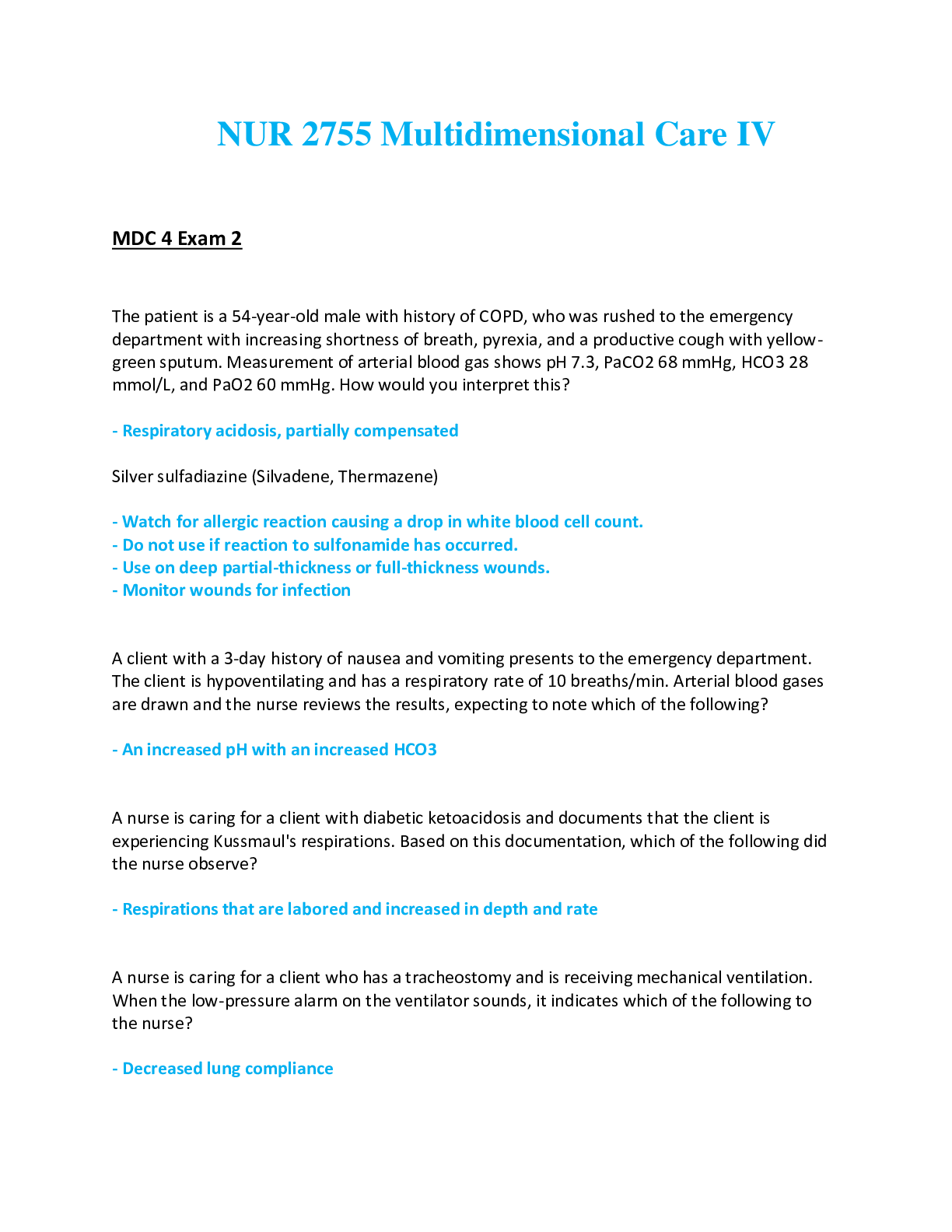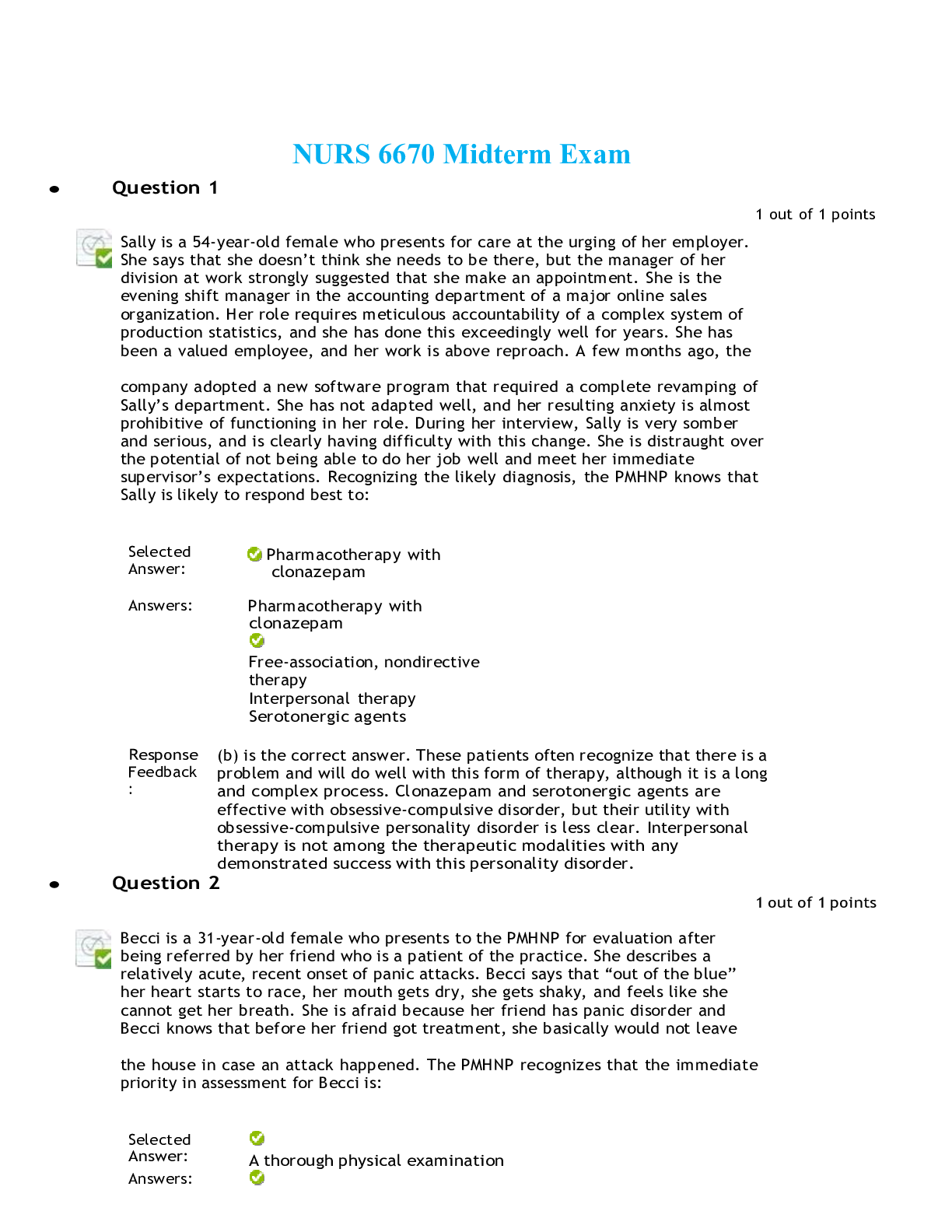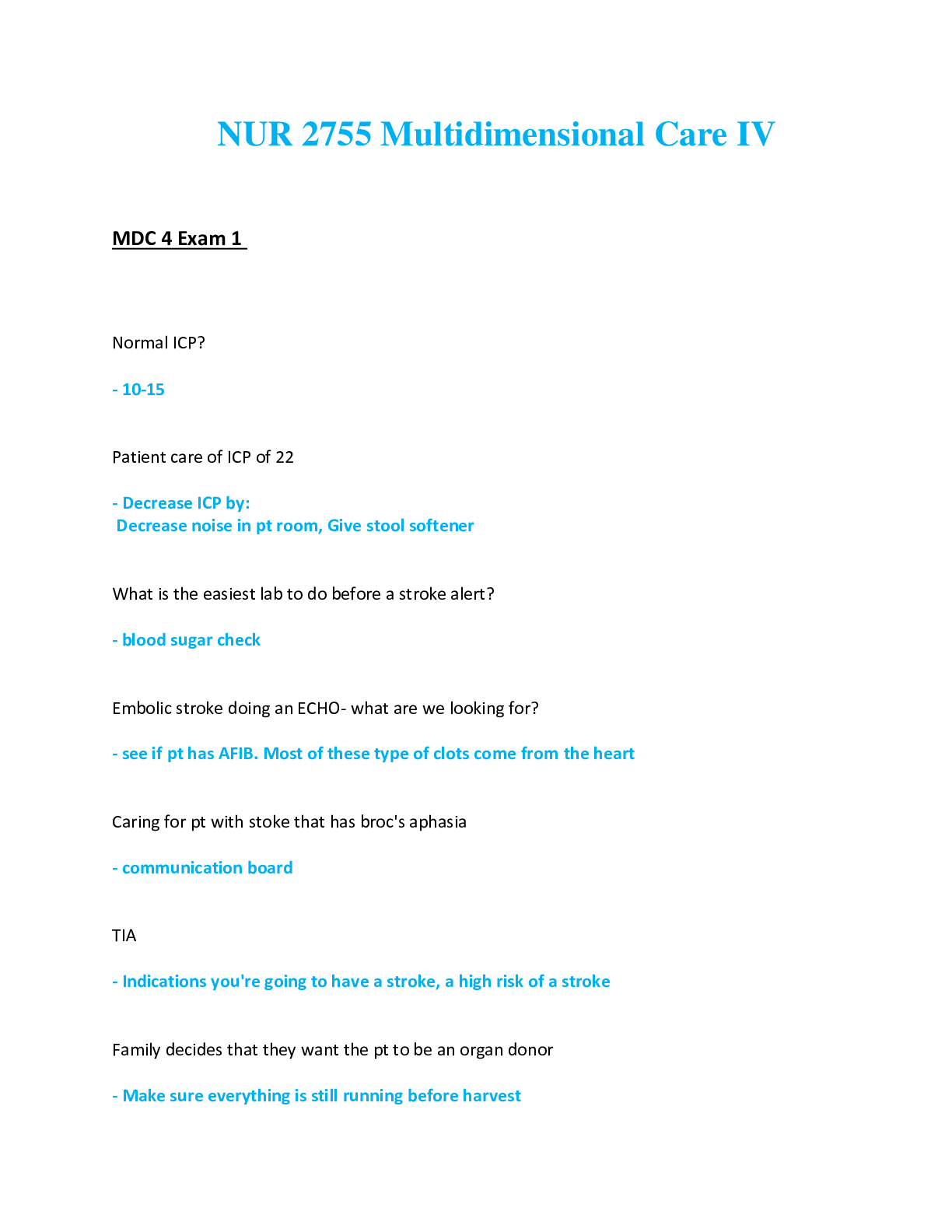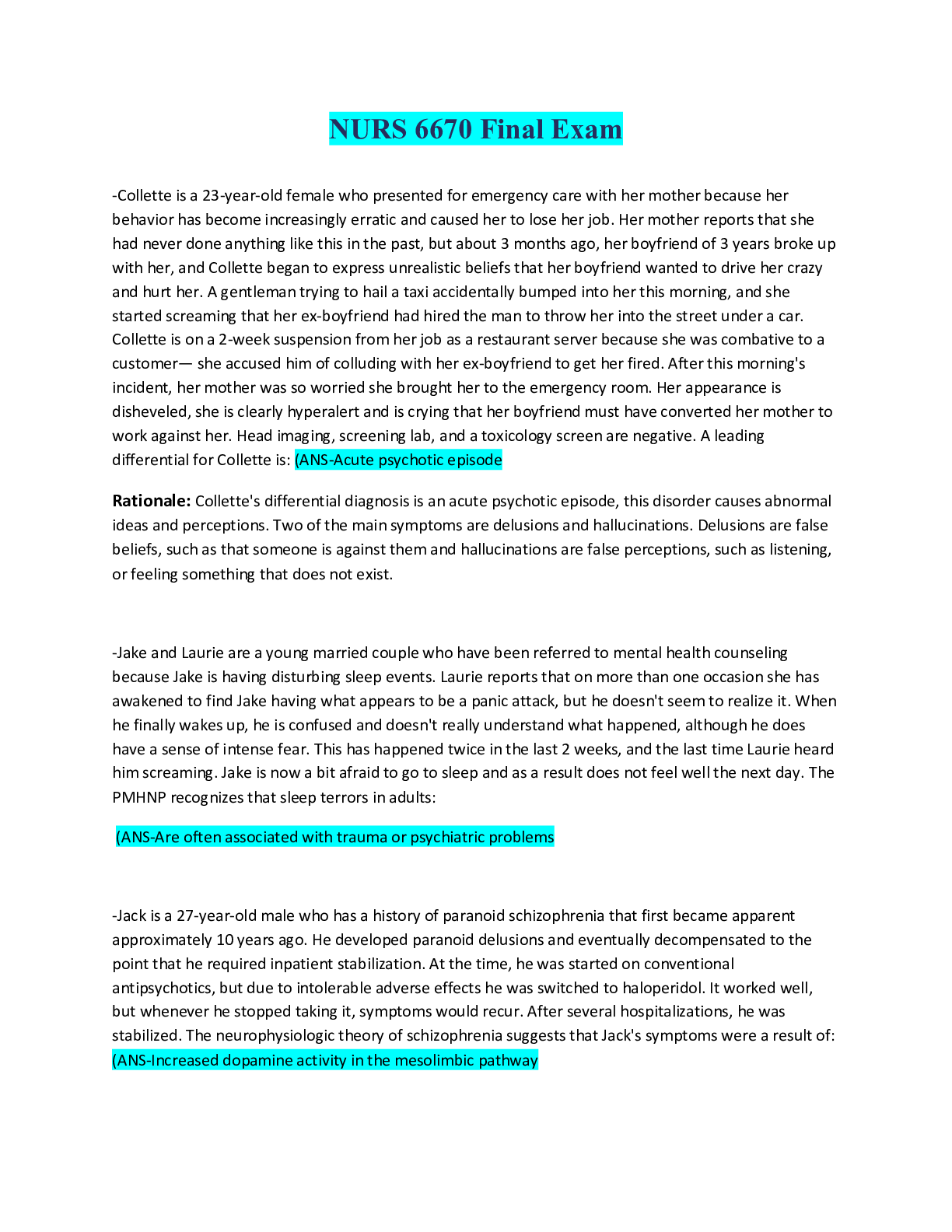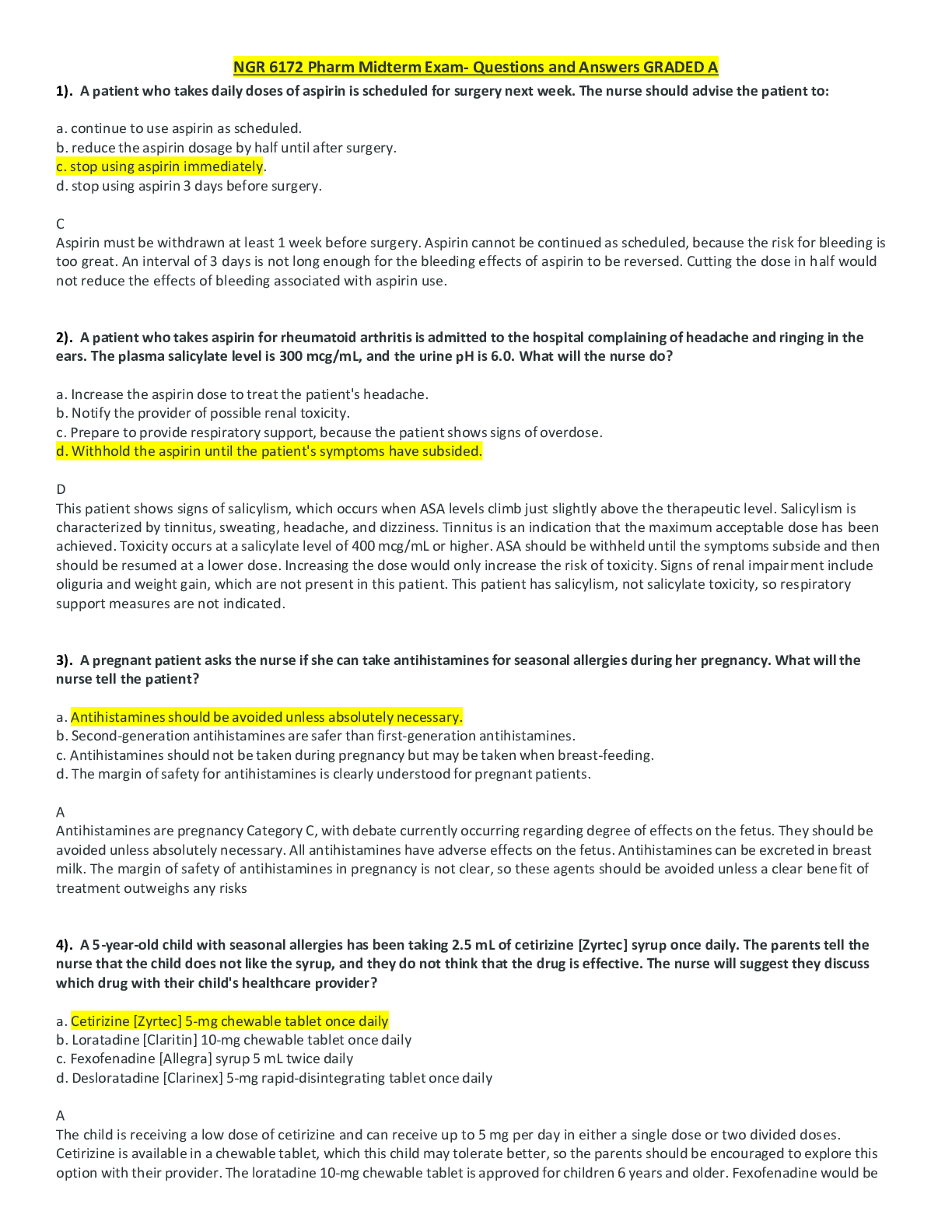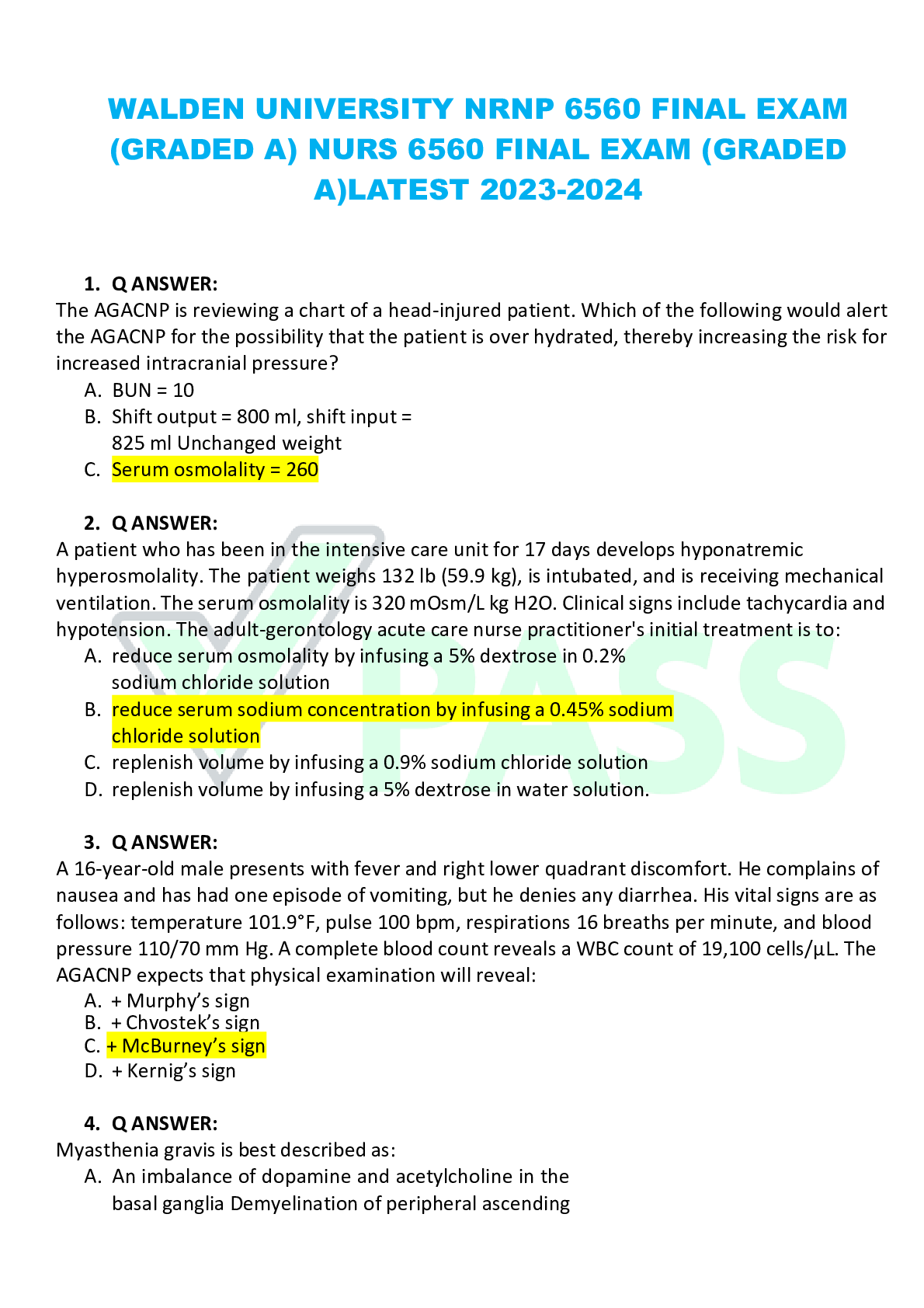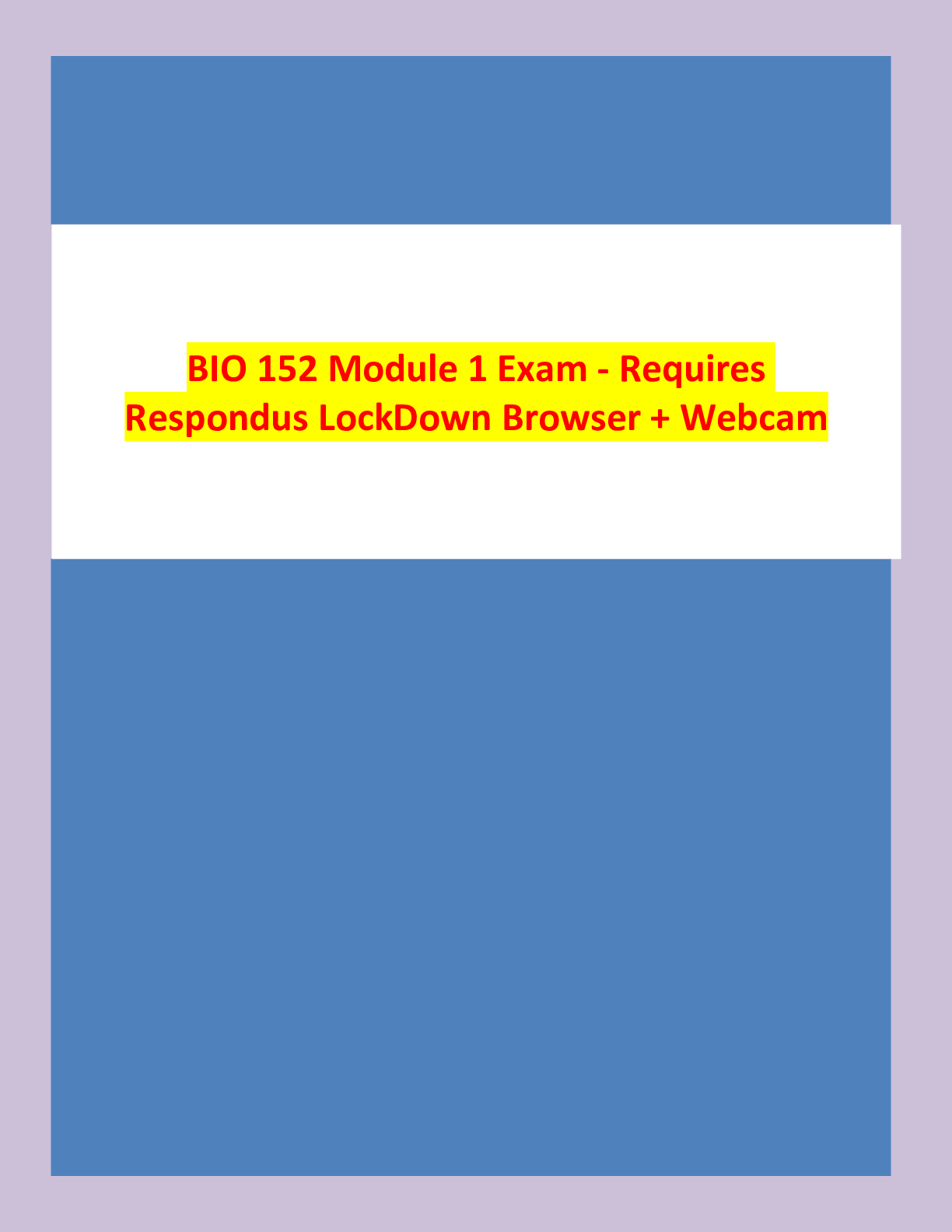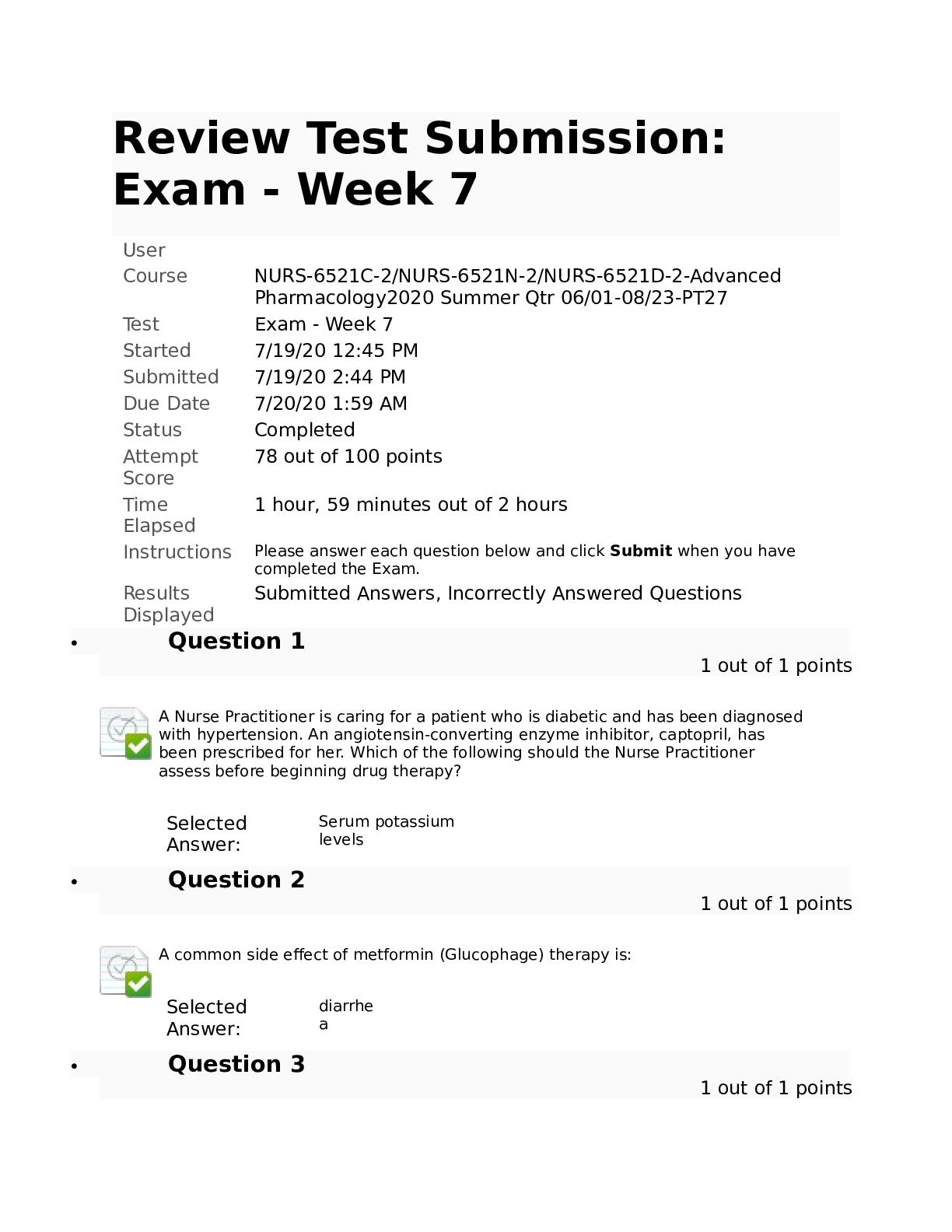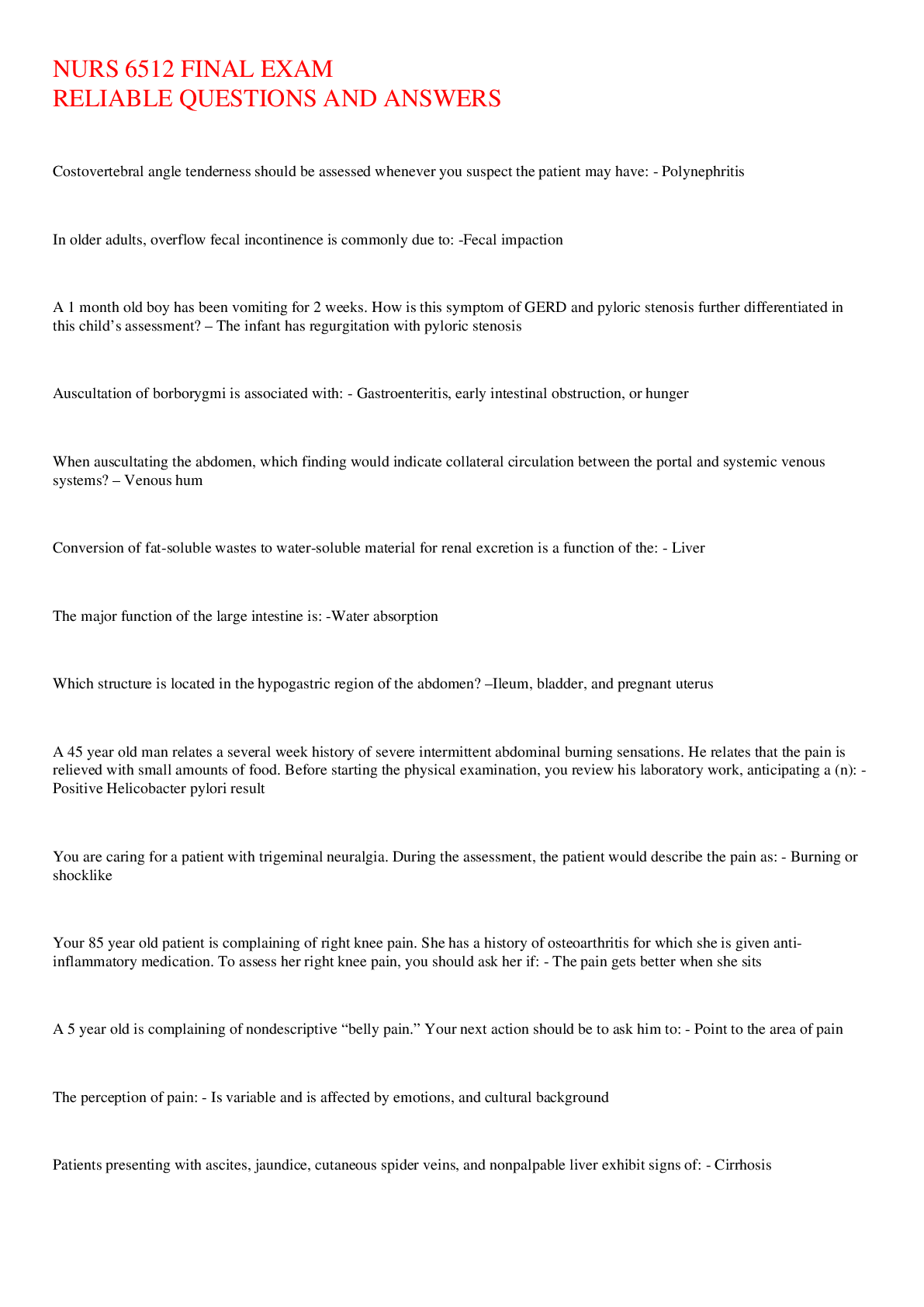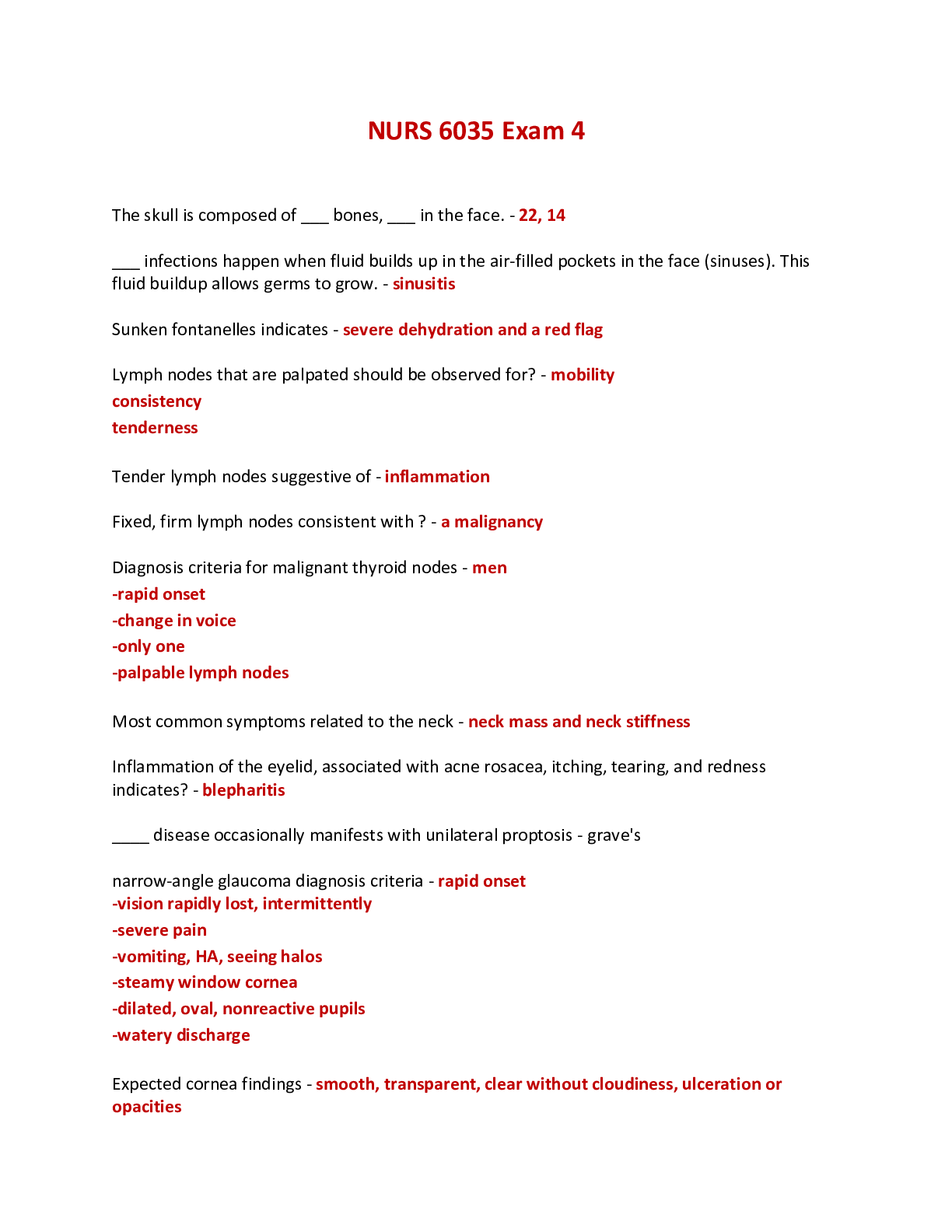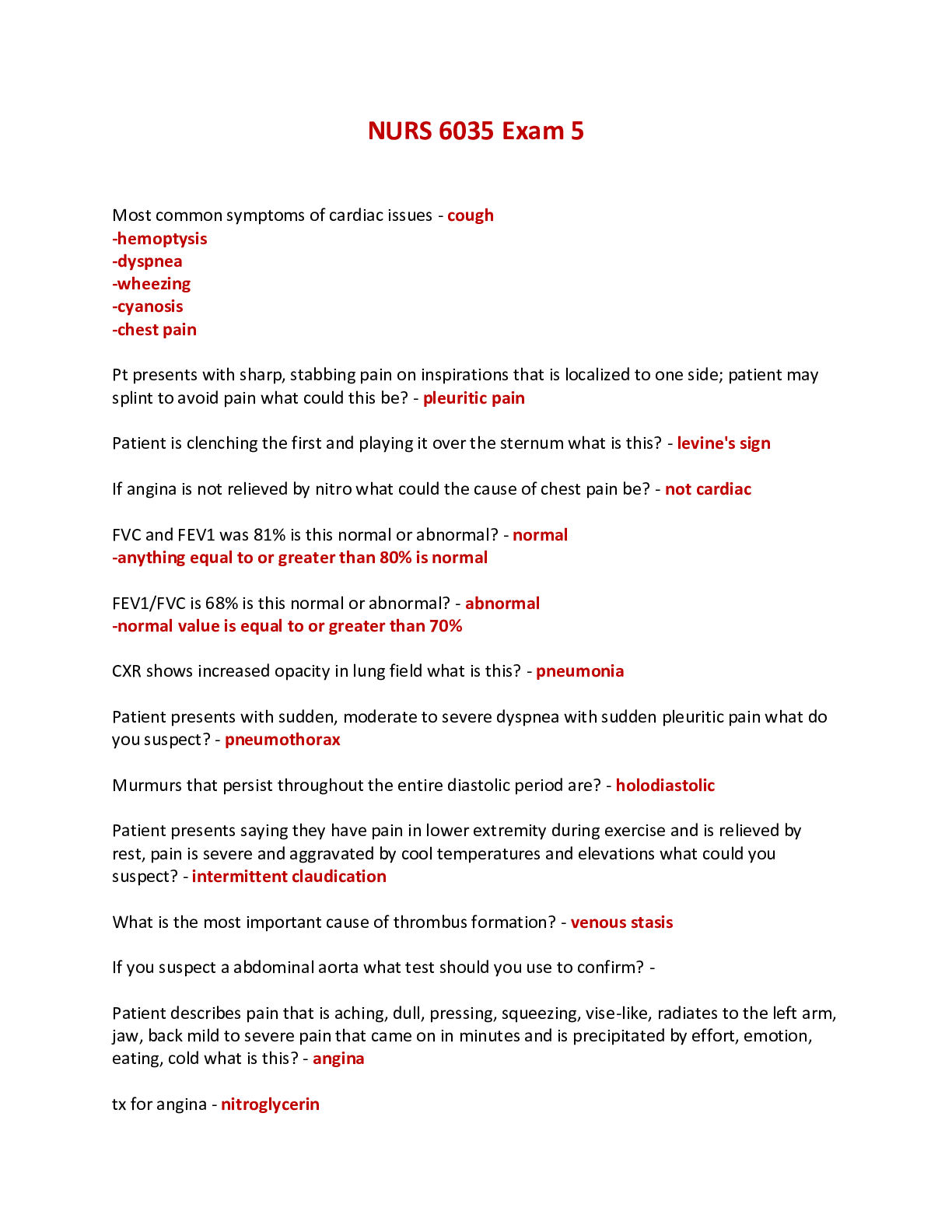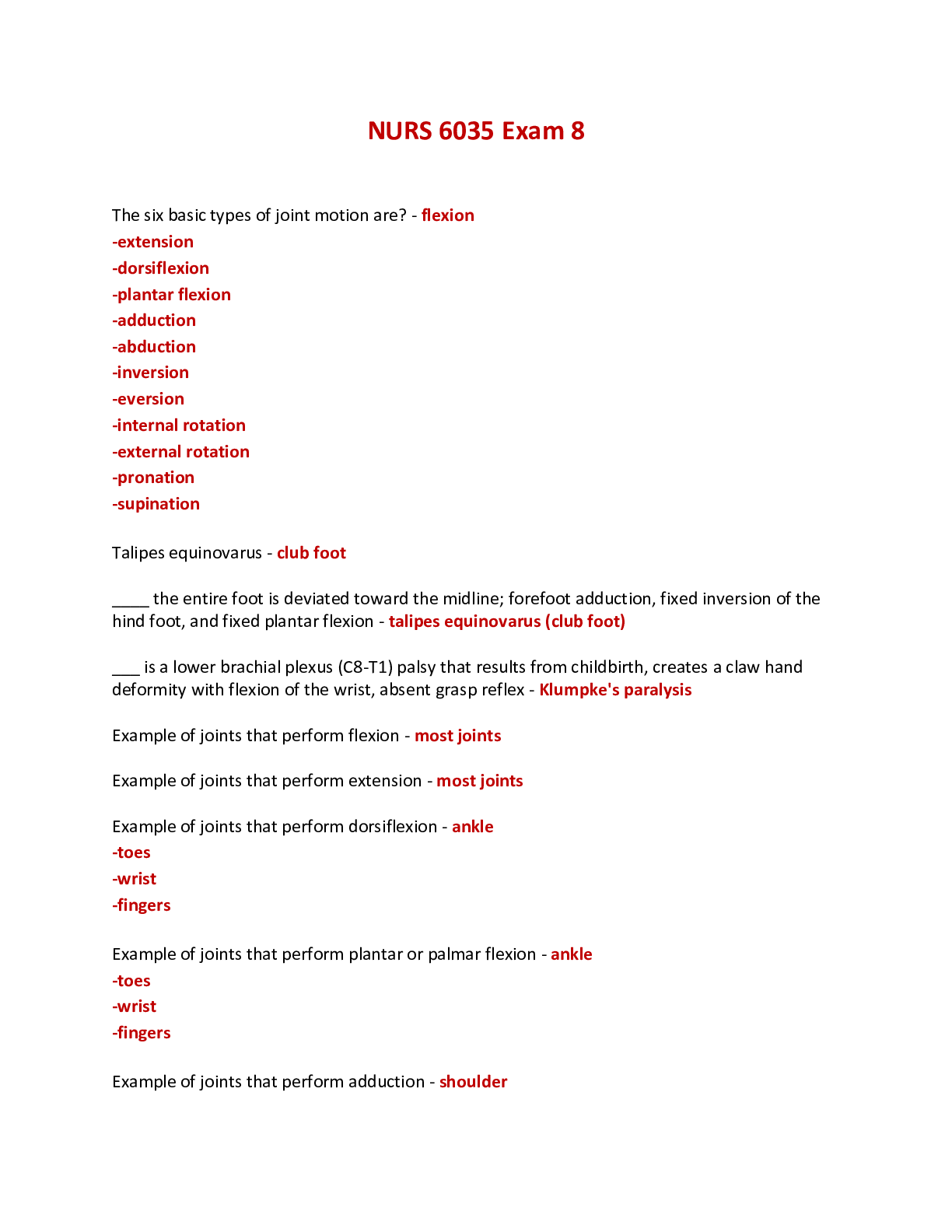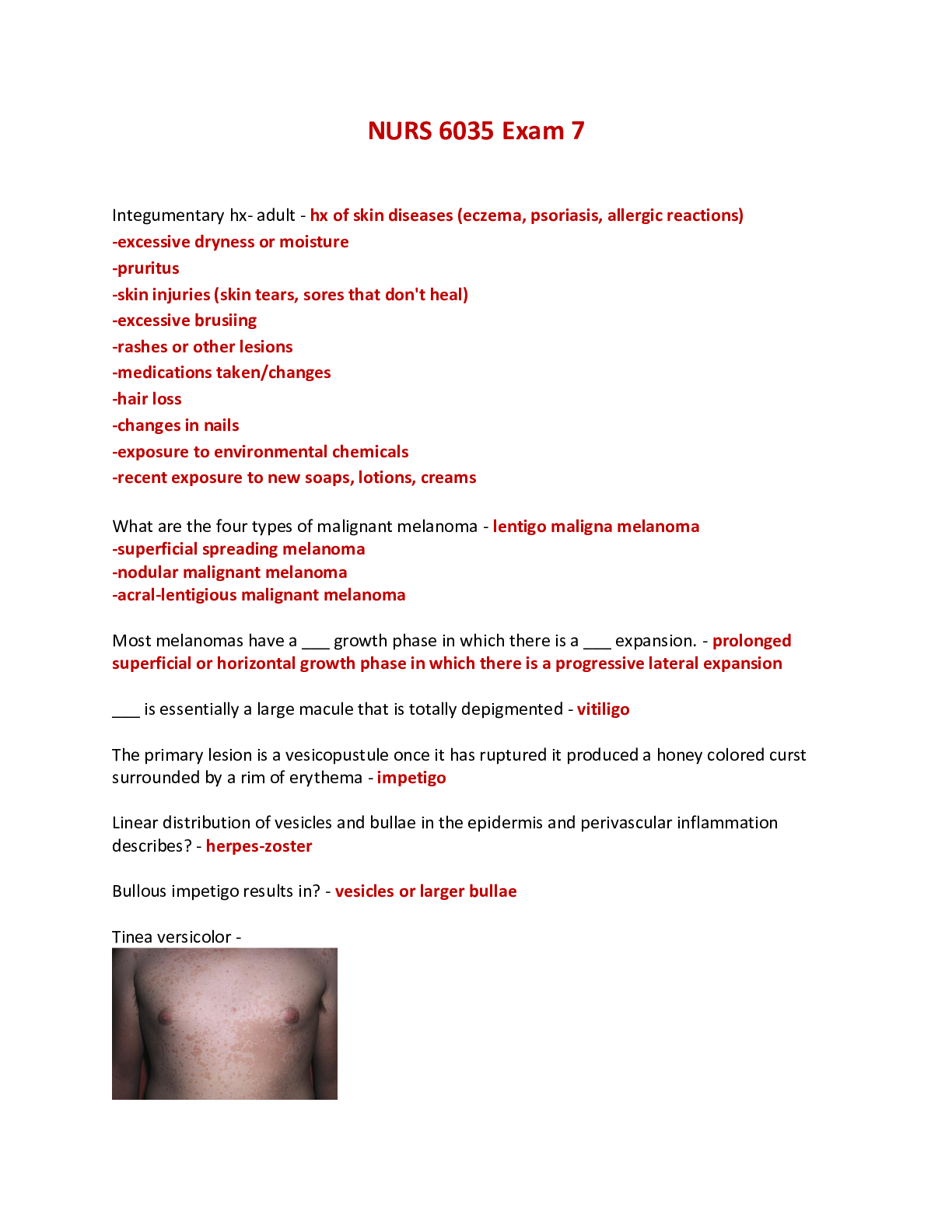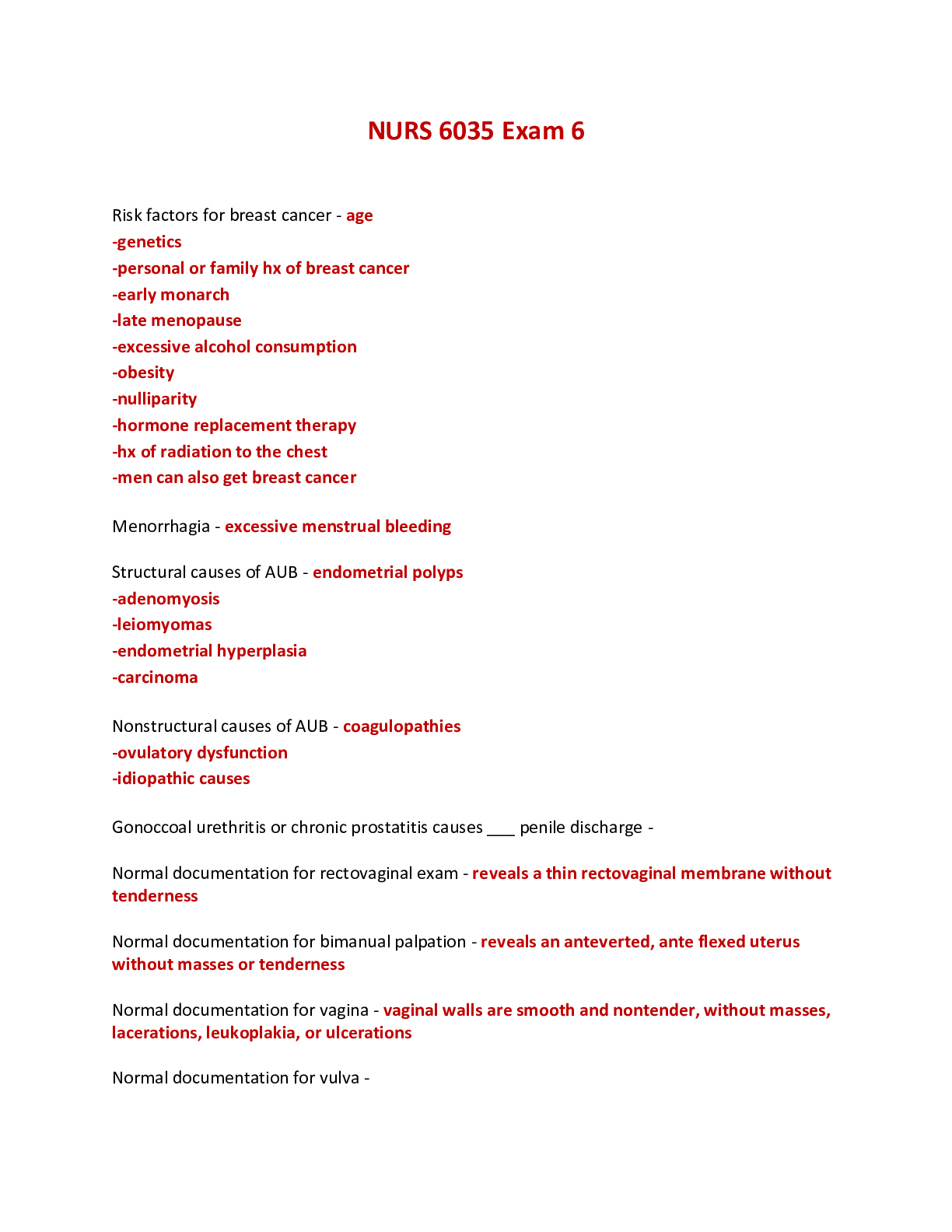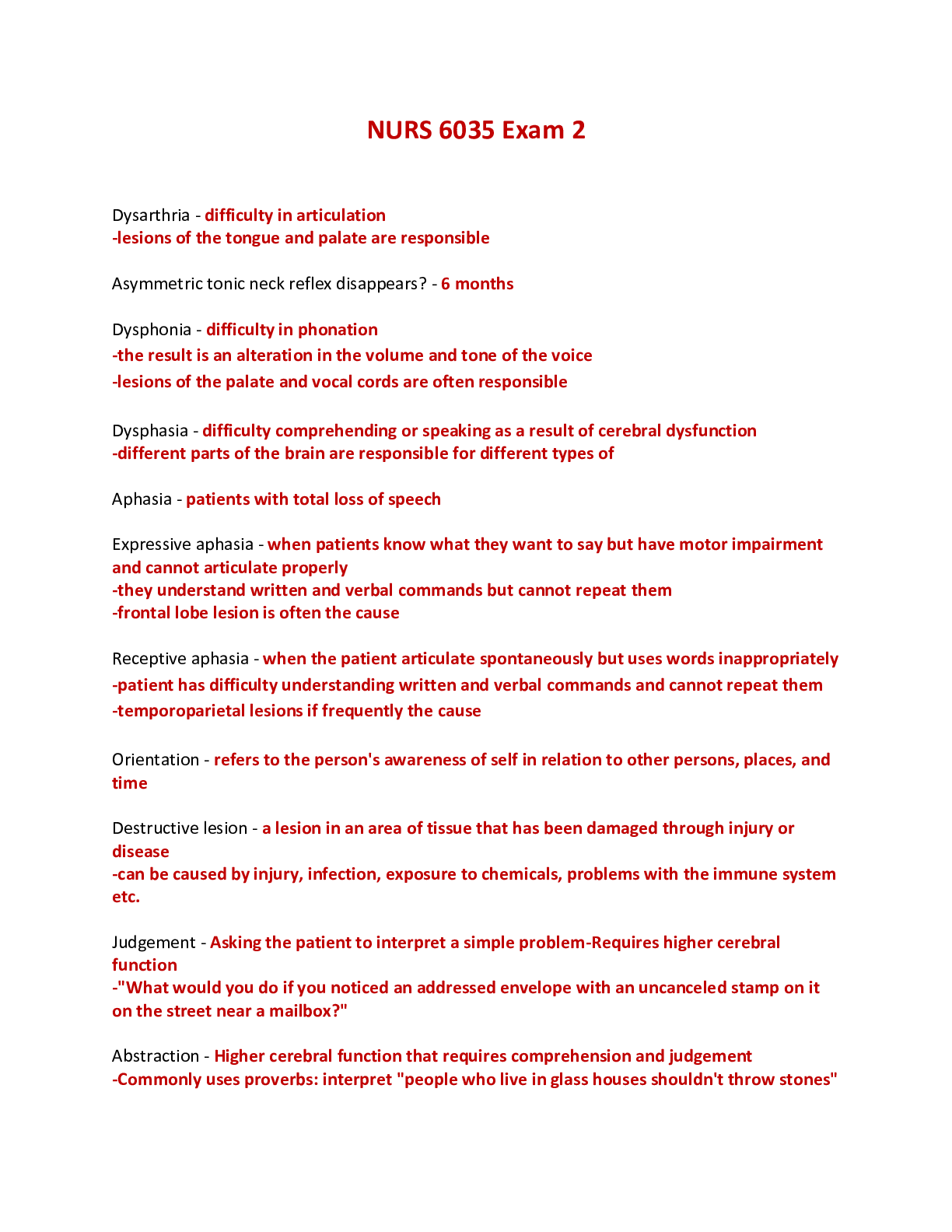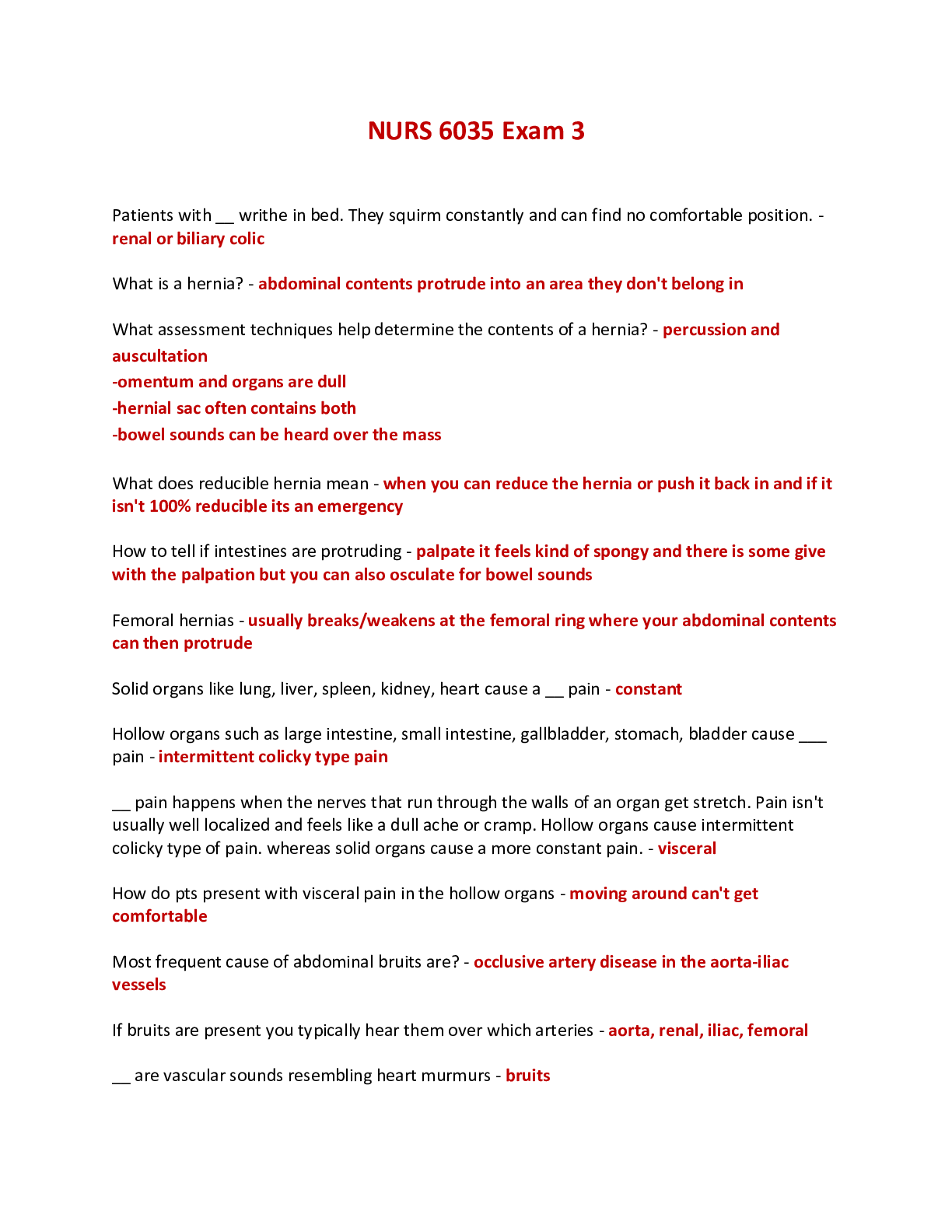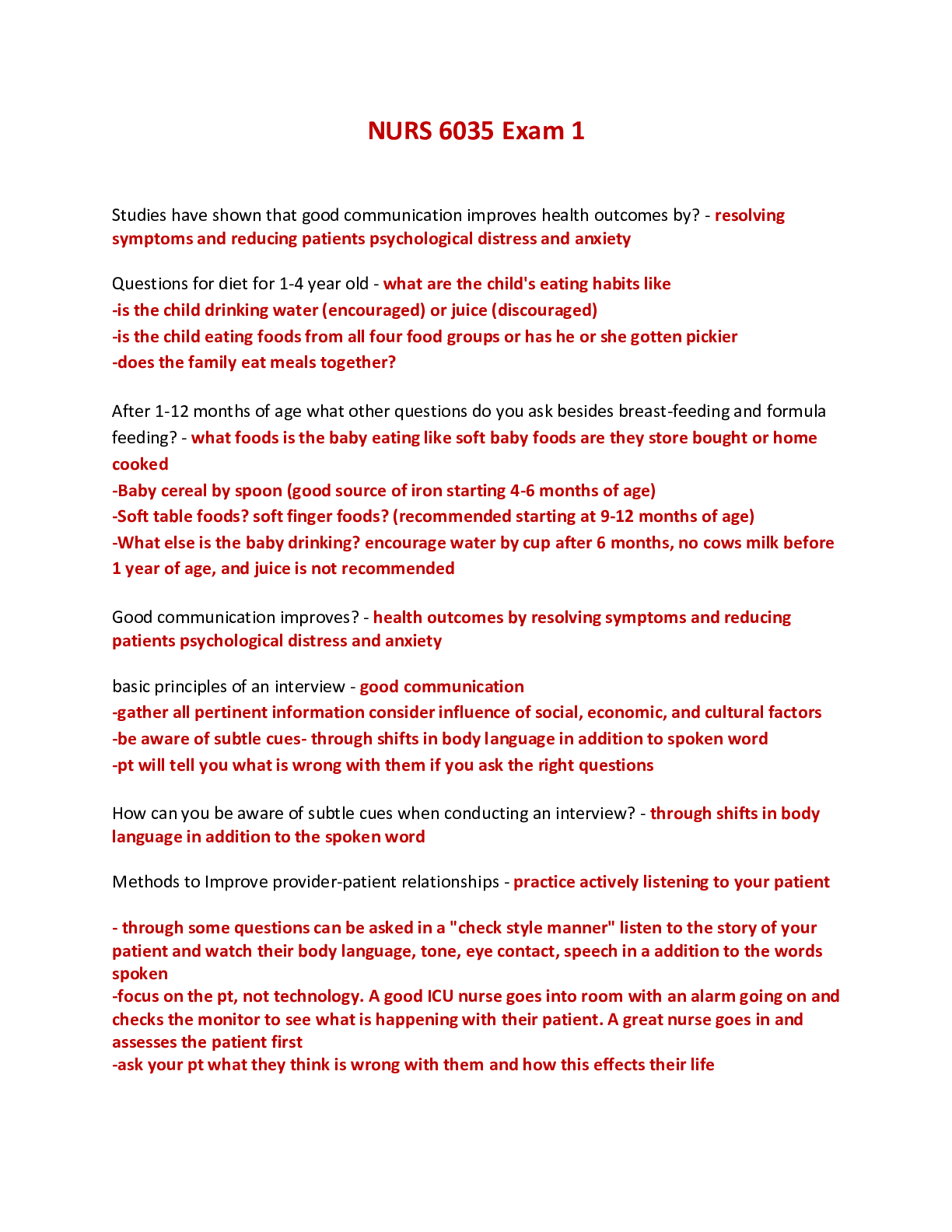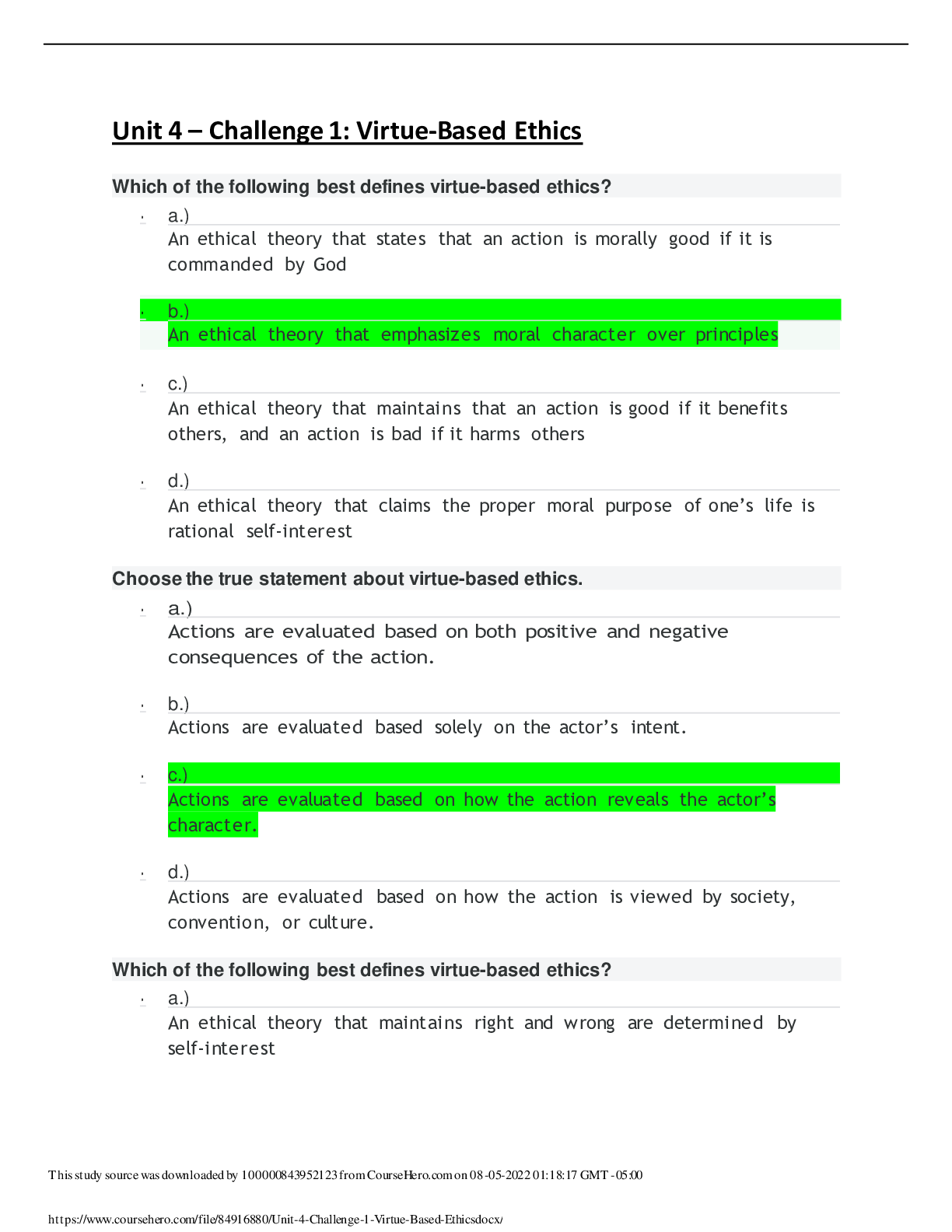Hematological & Immunological Problems Exam - Questions and Answers
Document Content and Description Below
Hematological & Immunological Problems Exam - Questions and Answers Which type of fatigue may improve with exercise after awakening? A. Functional B. Acute C. Persistent D. Anemia associated Which a... ssessment finding presents with early rheumatoid disease? A. Pain and swelling in both small and large peripheral joints B. Rigid joints with diminished range of motion C. Joint swelling and immobility on rising D. A cardiac rub with pulmonary friction rub Which test is diagnostic of RA? A. Rheumatoid factor B. Erythrocyte sedimentation rate C. C-reactive protein D. Anti-citrulline-containing peptide titers What is the mainstay of management for infectious mononucleosis? A. Antivirals B. Symptom control C. Corticosteroids D. Isolation Chronic fatigue syndrome (CFS) tends to occur in which individuals? A. Active, highly functional adults B. Depressed middle-aged adults C. Individuals with a depressed immune system D. Individuals who are hypochondriacs What is the bulls-eye rash of Lyme disease called? A. Erythema infectiosum B. Viral exanthem C. Erythema migrans D. Morbilliform exanthem Which condition if left untreated will progress to complaints that include multiple joint arthritis? A. Sjögren's syndrome B. HIV/AIDS C. Guillain-Barré D. Lyme disease Keratoconjunctivitis sicca is a classic sign of which condition? A. Systemic lupus erythematosus B. Sjögren's syndrome C. Fibromyalgia syndrome D. Lyme disease Which person is four times more likely to develop systemic lupus erythematosus (SLE) than a Caucasian? A. One of African descent B. An Asian C. A Hispanic D. One from the Middle East The older adult patient has an infection. The clinician should assess for which clinical manifestation? A. Fever B. Dementia C. Confusion D. Ecchymosis Which aspect should the clinician consider when trying to determine the cause of lymphadenopathy? A. Prothrombin time B. Marital status C. Patient's age D. Blunt trauma The patient has a fever of 104.2°F (40.1°C). Which condition should the clinician be considering as the etiology of the fever? A. Urinary tract infection B. Infectious hepatitis C. Tuberculosis D. Pancreatitis Which type of hypersensitivity reaction should the clinician suspect in a patient who has an elevated IgE level? [Show More]
Last updated: 1 month ago
Preview 1 out of 9 pages

Reviews( 0 )
Document information
Connected school, study & course
About the document
Uploaded On
Mar 27, 2024
Number of pages
9
Written in
Additional information
This document has been written for:
Uploaded
Mar 27, 2024
Downloads
0
Views
14



